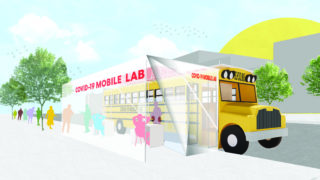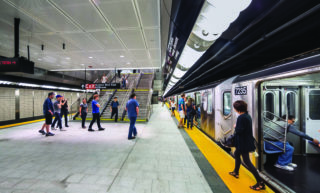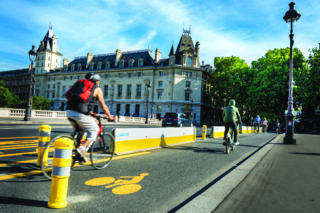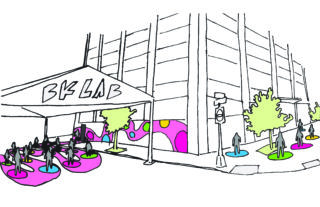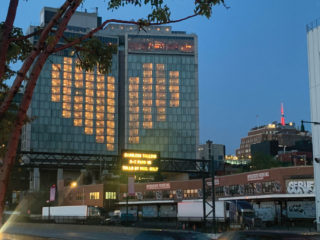Through the collapse of financial markets, natural disasters, and pandemics, it’s clear that public mass transportation (subway, bus, commuter rail) is an essential element in the daily life of the modern metropolis. It is the arterial system of NYC, connecting the lifeblood of the city—its inhabitants and visitors alike—to the robust built environment where we live, work, and play. Currently, with NYC as the epicenter of the global COVID-19 pandemic, safe and reliable transportation is the key to establishing normalcy in a post-COVID environment. The steps we take in our recovery efforts to improve the transportation network have far-reaching implications beyond the regional system, but will also serve as a model for global municipalities.
The start of 2020 was to be a milestone in considering the major structural challenges of our current transportation models. We’ve seen federal, regional, and city agencies tackle policy and funding challenges to improve transit-oriented developments, particularly in the New York tri-state area. A program that was supposed to be a cataclysmic investment in the future of transit, the Metropolitan Transportation Authority’s (MTA) 2020-2024 Capital Plan, totaling $54.8 billion, helped to clarify some regional priorities and commitments to the current network, increase transportation accessibility, and stimulate the local economy.
COVID-19 has put these massive transportation challenges under a microscope. The roadmap for immediate improvements to the current system are up in the air as government and agency budgets are strained by pandemic relief policies. Decrease in ridership and shrinking tax revenues further complicate the funding woes of an already cash-strapped transportation network. We are at an inflection point where recovery to the status quo is not an option; without a clear precedent, we as architects must envision a new normal.
In the absence of a COVID-19 vaccine, it’s hard to understand how mass transit can continue to be a safe mode of transportation. At the time I’m writing this, I’m preparing for my inevitable return to the commute. As a business owner, I’m concerned about factors that affect employee commutes, their health, and the protocols that need to be implemented for our firm to resume work. I’m not alone in worrying. Many of us are wondering: How often will subway cars be sanitized? How will social distancing be enforced in a subway car?
As an architect, I am an optimist and see this moment as an unprecedented opportunity to change our staid cultural habits regarding mass transportation. Addressing the commute post-pandemic will help preserve the urban ethos and its sustainable practices. The work of AIA New York Chapter’s Transportation and Infrastructure Committee documented in its Policy Framework is a solid basis for guiding design thinking and dialogue as seen through the lenses of mobility, placemaking, sustainability, and planning/financing. Our colleagues at the Regional Plan Association have provided principles of responsible transit policy and development that will continue to hold true in the long term. Their principles for fixing institutions, creating a customer-oriented transportation network, addressing climate change and social equity, and establishing access to mass transit suddenly seem more prescient.
As a principal leading the transportation design practice at Dattner Architects, and a co-chair of AIANY’s T and I Committee, I’ve dedicated my career to improving transportation in our city. My lifetime of work within this typological niche has provided me with key insights to the complexities of policy and design of our transportation and infrastructure networks. I believe we should take strategic steps towards prioritizing long-term improvement beyond the immediate horizon through the following opportunities in planning, building, and maintaining the city:
1. Increase mobility options to relieve congestion on the subway, providing resilience in the transit ecosystem. Expand the existing shared-streets infrastructure and encourage public/private partnerships such as bike share to implement expansion.
2. Convert streets to dedicated mass transportation infrastructure by inserting light rail or streetcar. As a precursor, create true Bus Rapid Transit from the existing Select Bus Service with segregated bus lanes and station stops. Provide elegantly designed vehicles and rolling stock to entice riders and complement the streetscape.
3. Plan and build new infrastructure now to provide resiliency in the city and region before the next pandemic or natural disaster. Reinforce and expand digital infrastructure to support a remote workforce, traffic management, and autonomous vehicular roadways.
4. Generate funds for mass transportation improvement through an expansion of the planned congestion pricing, enforce HOV-only use, and encourage smaller personal transportation.
5. Consolidate systems operated by the MTA, New Jersey Transit, and the Port Authority of New York and New Jersey for a more fluid, resilient, and sustainable transit system.
6. Reduce touch points in stations by eliminating touch screens, revenue collection machines, and turnstiles. Make transit free of point-of-purchase fare collection. Use tax options to fund mass transit by consolidating revenue collection with other funding sources, such as the MTA commuter tax.
7. Eliminate rush hour by staggering hours of operation. Set up alternative office hours with two overlapping shifts. Consider staggered work over geographical areas, such as FiDi, The Villages, Midtown, etc.
8. Encourage maintenance through top-down leadership and bottom-up recognition. Recognize the importance of essential maintenance and sanitation workers. Pride in maintaining the lifeblood of the city is critical to a healthy, safe, and secure subway.
As we plan for an eventual return to the workplace and, consequently, the commute, it may seem as though we are stepping into a cold ocean (with personal protective equipment). The steps will be tenuous and will try our patience. We’ll need to be assured that the commute will be safe, clean, and efficient. After we adapt in the short term, will we be back to normal? Will there be a new paradigm for life in the city? In this moment of great uncertainty, architects have a unique opportunity to provide a global model for mass transportation in a post-pandemic New York City.










